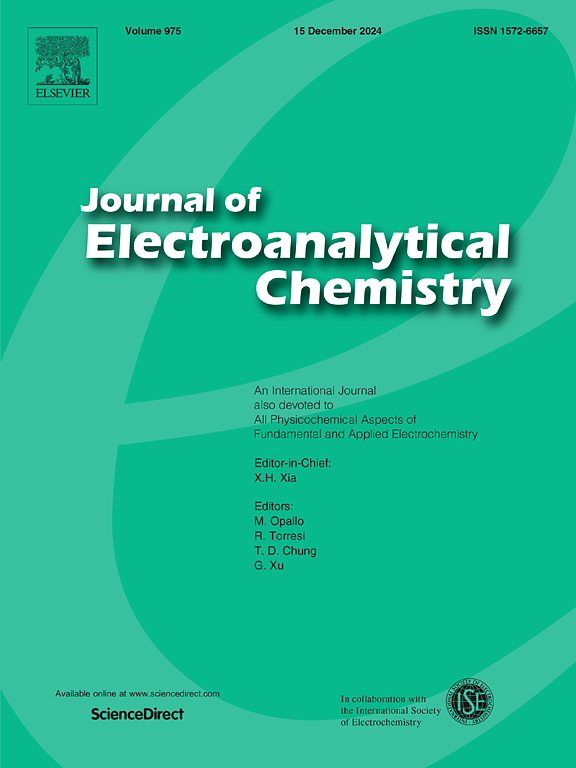壳锚结构的掺氮VS2阴极提高锌离子电池的存储性能
IF 4.1
3区 化学
Q1 CHEMISTRY, ANALYTICAL
引用次数: 0
摘要
采用约束生长策略,在中空介孔碳球内合成了壳锚定n掺杂(NSA) VS2作为水性锌离子电池(zbs)的正极材料。VS2@NSA复合材料在宽电压范围(0-1 V)内具有新颖的三步脱嵌过程,显著提高了Zn2+的存储容量。值得注意的是,VS2@NSA的壳锚定结构有效地缓解了大量Zn2+插入带来的粉碎和体积膨胀问题。此外,VS2@NSA在1 A/g下循环500次后表现出282.4 mA h/g的优异循环稳定性。大量Zn2+的插入不会造成过大的体积变化和结构破坏,这可以通过VS2@NSA的受限结构有效地抑制。本文章由计算机程序翻译,如有差异,请以英文原文为准。
N-doped VS2 cathode with shell-anchored structure for enhancing the storage performance of Zn-Ion batteries
Using a confinement growth strategy, shell-anchored N-doped (NSA) VS2 has been synthesized within hollow mesoporous carbon spheres as a cathode material in aqueous zinc ion batteries (ZIBs). The VS2@NSA composite exhibits a novel three-step deintercalation process across a broad voltage range (0–1 V), significantly boosting Zn2+ storage capacity. Notably, the shell-anchored structure of VS2@NSA effectively mitigates the pulverization and volume expansion issues associated with extensive Zn2+ insertion. Furthermore, VS2@NSA exhibited the excellent cycle stability of 282.4 mA h/g at 1 A/g after 500 cycles. Massive Zn2+ insertion did not cause excessive volume variation and structure destruction that can be effectively inhibited by the confined structure of VS2@NSA.
求助全文
通过发布文献求助,成功后即可免费获取论文全文。
去求助
来源期刊
CiteScore
7.80
自引率
6.70%
发文量
912
审稿时长
2.4 months
期刊介绍:
The Journal of Electroanalytical Chemistry is the foremost international journal devoted to the interdisciplinary subject of electrochemistry in all its aspects, theoretical as well as applied.
Electrochemistry is a wide ranging area that is in a state of continuous evolution. Rather than compiling a long list of topics covered by the Journal, the editors would like to draw particular attention to the key issues of novelty, topicality and quality. Papers should present new and interesting electrochemical science in a way that is accessible to the reader. The presentation and discussion should be at a level that is consistent with the international status of the Journal. Reports describing the application of well-established techniques to problems that are essentially technical will not be accepted. Similarly, papers that report observations but fail to provide adequate interpretation will be rejected by the Editors. Papers dealing with technical electrochemistry should be submitted to other specialist journals unless the authors can show that their work provides substantially new insights into electrochemical processes.

 求助内容:
求助内容: 应助结果提醒方式:
应助结果提醒方式:


